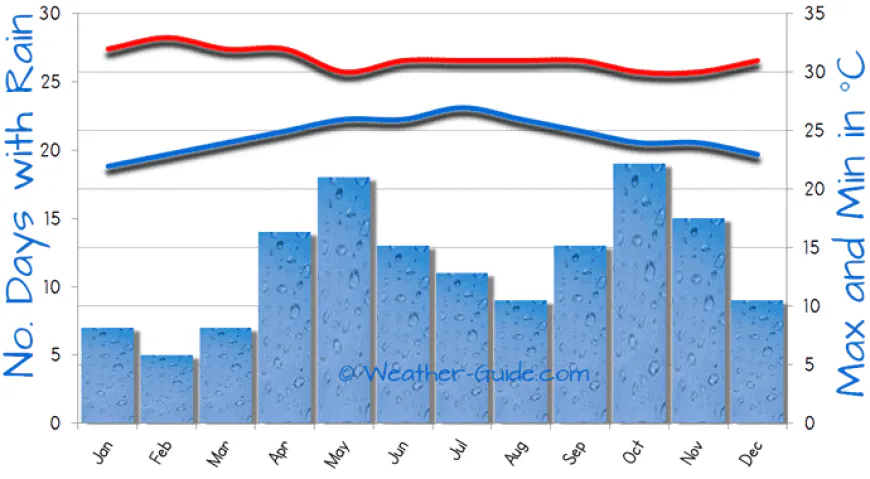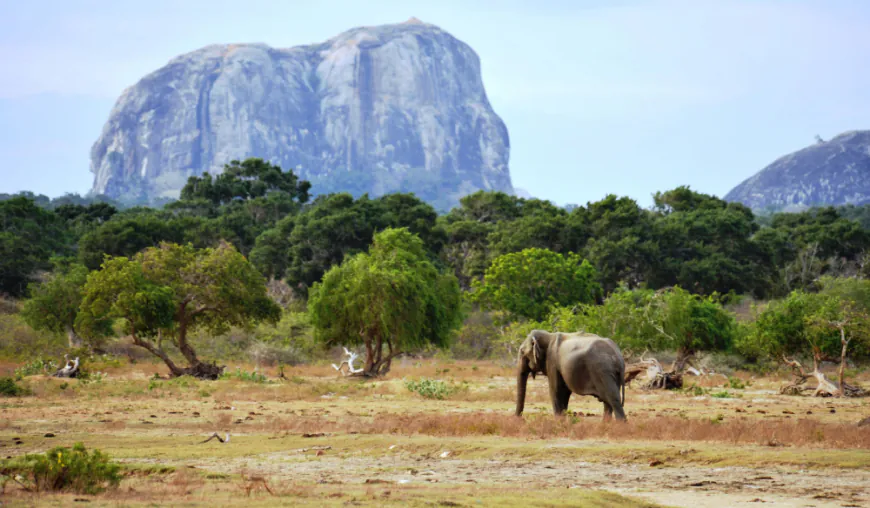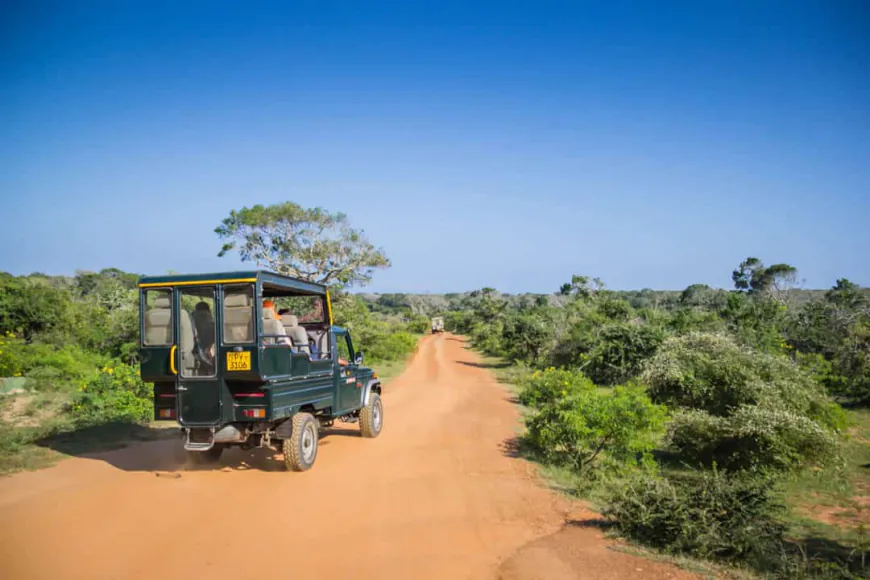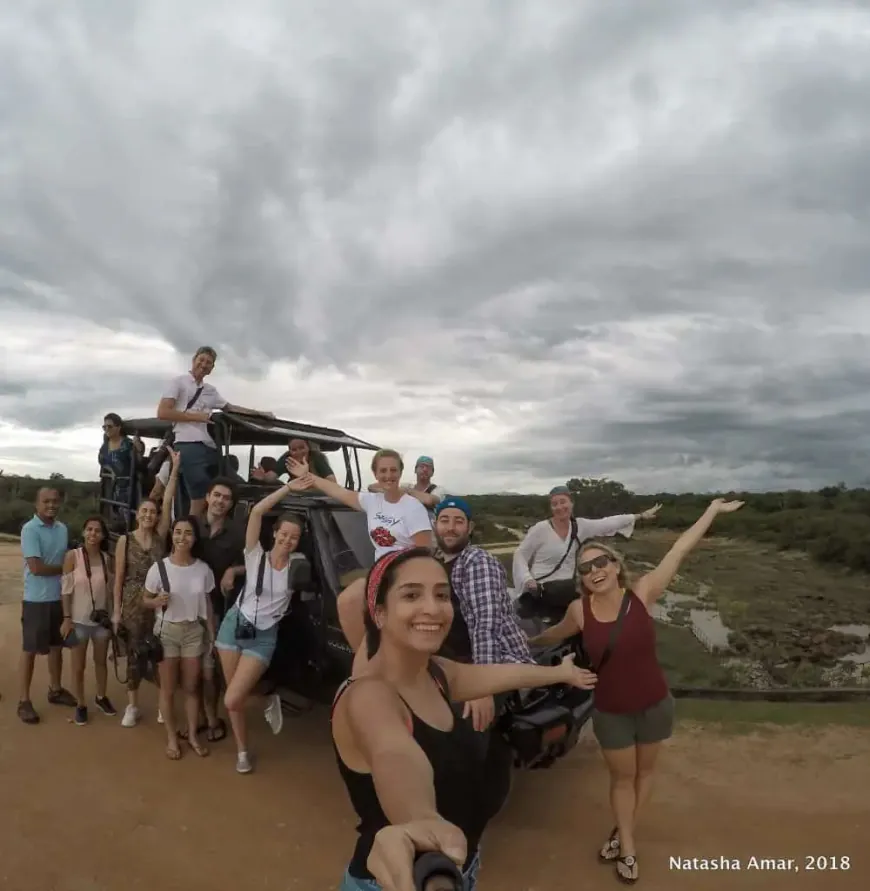Understanding Weather Patterns and Visitor Tips for Yala Park Sri Lanka: A Seasonal Guide
"Explore the weather patterns and seasonal activities at Yala Park Sri Lanka. Discover packing tips, safety precautions, and the best events and activities for each season.

-
Yala Park Weather Guide

Yala National Park, Sri Lanka's premier wildlife sanctuary, experiences a warm, dry climate with temperatures ranging from 26°C to 33°C throughout the year. According to weather data, July marks the driest period, offering ideal conditions for wildlife viewing, while the park sees increased rainfall from October to January.
-
Seasonal Climate Variations
Yala National Park experiences distinct weather patterns throughout the year, which significantly impact both wildlife behavior and visitor experiences. The following table provides an overview of the yearly temperature ranges and rainfall patterns in the park:
Month Average Temperature (°C) Rainfall (mm) January 26-30 74.4 February 26-31 75.7 March 27-32 75.7 April 28-33 112.9 May 28-32 208.5 June 27-30 133.8 July 26-33 16.0 August 26-32 148.3 September 26-31 148.6 October 26-30 258.3 November 25-29 224.0 December 25-29 203.4 The hottest months in Yala National Park are typically March, April, and May, with temperatures reaching up to 33°C (91°F). These high temperatures can impact wildlife behavior, often causing animals to seek shade and water sources during the hottest parts of the day. Visitors during this period should be prepared for intense heat and plan their activities accordingly, focusing on early morning or late afternoon safaris when animals are more active.
Conversely, the coolest months are generally December and January, with temperatures dropping to around 25°C (77°F) at night. While this may not seem particularly cool by global standards, it represents a significant drop for the region and can lead to increased animal activity during daylight hours.
Rainfall patterns in Yala are influenced by two monsoon seasons. The Yala monsoon (southwest monsoon) affects the park from May to August, while the Maha monsoon (northeast monsoon) brings heavier rains from October to January. The wettest month is typically October, with an average rainfall of 258.3 mm. This increased precipitation can lead to lush vegetation and filled water holes, attracting diverse wildlife. However, it can also make some areas of the park less accessible due to flooding or muddy conditions.
July stands out as the driest month, with only about 16 mm of rainfall. This dry period often coincides with increased wildlife sightings, as animals congregate around remaining water sources. However, the landscape can appear more arid during this time.
Humidity levels in Yala National Park vary throughout the year, generally ranging from 71% to 88%. The highest humidity is typically experienced during the monsoon seasons, particularly from May to September. High humidity combined with high temperatures can make conditions feel oppressive for visitors, especially during midday hours. Conversely, the driest air is often experienced in February and March, which can provide more comfortable conditions for exploration despite the high temperatures.
These weather patterns play a crucial role in shaping the park's ecosystem and influencing visitor experiences. Understanding these variations can help travelers plan their visits to coincide with their preferred conditions and maximize their chances of memorable wildlife encounters.
-
Seasonal Visitor Guide

Yala National Park experiences distinct seasons that require different preparations for visitors. Here are essential packing tips and safety precautions for each season to ensure a comfortable and safe safari experience:
Season Packing Essentials Clothing Recommendations Safety Precautions Dry Season (May-August) Sunscreen, hat, sunglasses, insect repellent, reusable water bottle Lightweight, breathable clothing, long-sleeved shirts, long pants, comfortable walking shoes Stay hydrated, avoid midday heat, watch for signs of heat exhaustion Inter-Monsoon (March-April, September-October) Light rain jacket, quick-dry clothing, insect repellent Moisture-wicking fabrics, light layers, waterproof shoes Be prepared for sudden rain showers, watch for slippery surfaces Wet Season (October-January) Waterproof jacket, umbrella, waterproof bag for electronics Waterproof footwear, quick-dry clothing, extra socks Be cautious of flooding, check road conditions before travel Cool Season (December-February) Light jacket or sweater for early mornings, binoculars Light layers, long pants, closed-toe shoes Be prepared for cooler temperatures in early mornings and evenings For the dry season (May-August), the primary concern is protection from the sun and heat. Visitors should pack high-SPF sunscreen, wide-brimmed hats, and sunglasses to shield themselves from the intense sunlight. Lightweight, breathable clothing in light colors is recommended to reflect heat and provide comfort during safaris. It's crucial to stay hydrated, so bringing a reusable water bottle is essential. To avoid heat-related illnesses, visitors should plan activities during cooler parts of the day and watch for signs of heat exhaustion.
During the inter-monsoon periods (March-April and September-October), weather can be unpredictable. Packing a light rain jacket and quick-dry clothing is advisable. Moisture-wicking fabrics are ideal for managing both rain and humidity. Visitors should be prepared for sudden rain showers and be cautious of potentially slippery surfaces on trails or in the safari vehicle.
The wet season (October-January) requires more extensive rain gear. A waterproof jacket, umbrella, and waterproof bag for electronics are essential. Waterproof footwear is crucial for comfort and safety. Visitors should be aware of potential flooding and check road conditions before traveling to the park. It's also important to bring extra socks to keep feet dry and prevent blisters.
In the cooler season (December-February), early mornings and evenings can be chilly. Packing a light jacket or sweater for these times is recommended. Layered clothing allows for adjustment as temperatures change throughout the day. This season is excellent for wildlife viewing, so bringing binoculars can enhance the safari experience.
Regardless of the season, insect repellent is crucial for protection against mosquitoes and other biting insects. Long-sleeved shirts and long pants are recommended for additional protection against both insects and sun.
For all seasons, it's important to respect wildlife and maintain a safe distance. Visitors should never attempt to feed or touch animals. Following the instructions of park rangers and guides is crucial for safety. Additionally, visitors should be aware of their surroundings and avoid walking or standing in tall grass where snakes might be present.
By following these seasonal recommendations and safety precautions, visitors can maximize their enjoyment of Yala National Park while minimizing risks associated with varying weather conditions.
-
Seasonal Events and Activities

Yala National Park and its surrounding areas offer a variety of seasonal events and activities that enhance the visitor experience throughout the year. Here's an overview of key festivals and recommended activities based on the seasons:
Season Festivals/Events Recommended Activities Dry Season (May-August) Kataragama Festival (July/August) Leopard spotting, elephant watching, night safaris Inter-Monsoon (March-April, September-October) Sinhala and Tamil New Year (April) Bird watching, photography tours, cultural visits Wet Season (October-January) Deepavali (October/November) Landscape photography, waterfall visits, botanical tours Cool Season (December-February) Duruthu Perahera (January) Early morning safaris, bird watching, hiking The Kataragama Festival, held in July or August, is one of the most significant events near Yala National Park. This two-week Hindu and Buddhist festival attracts thousands of pilgrims and tourists to the nearby town of Kataragama. Visitors can witness colorful processions, fire-walking rituals, and traditional dance performances. The festival coincides with the peak dry season in Yala, offering excellent opportunities for wildlife viewing in combination with cultural experiences.
During the dry season (May-August), Yala National Park is at its best for wildlife spotting. As water sources become scarce, animals congregate around remaining waterholes, making them easier to observe. This is the prime time for leopard sightings, with Yala boasting one of the highest leopard densities in the world. Night safaris, which are sometimes offered during this season, provide unique opportunities to see nocturnal animals.
The Sinhala and Tamil New Year, celebrated in April, falls during the inter-monsoon period. While this can make the park busier, it's an excellent time to combine wildlife viewing with cultural experiences. Many local villages near Yala celebrate with traditional games, feasts, and rituals. This period is also great for bird watching, as migratory birds begin to arrive.
The wet season (October-January) brings lush greenery to Yala, making it ideal for landscape photography. While wildlife viewing can be more challenging due to the dense vegetation, patient observers may be rewarded with sightings of animals in their vibrant, rain-washed habitats. This season coincides with Deepavali, the Hindu festival of lights, which is celebrated by the Tamil community in Sri Lanka. Visitors can experience the festival in nearby towns, adding a cultural dimension to their trip.
The cool season (December-February) offers comfortable temperatures for early morning safaris. This is an excellent time for bird watching, as many migratory species are present. The Duruthu Perahera, a Buddhist festival held in January, features spectacular processions and can be observed in Colombo or other major cities before or after a visit to Yala.
Throughout the year, Yala offers unique wildlife viewing opportunities. Elephants can be seen year-round, but large herds are more common during the dry season. Sloth bears are most active during the Palu fruit season, typically from May to July. For bird enthusiasts, the park hosts over 200 species, with the best viewing opportunities during the migratory season from November to April.
Regardless of the season, visitors to Yala can enhance their experience by participating in guided nature walks (where permitted), attending educational programs at visitor centers, or joining conservation activities. These events not only provide deeper insights into the park's ecosystem but also contribute to its preservation.
By aligning their visit with these seasonal events and activities, travelers can maximize their Yala experience, combining wildlife encounters with cultural immersion and natural beauty appreciation.
What's Your Reaction?








































